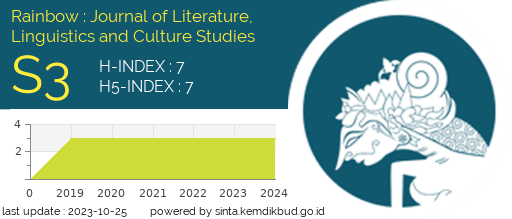Gender Construction, Stereotype, and Power Dynamics in Stromae’s Tous Les Mêmes: Critical Discourse Analysis
DOI:
https://doi.org/10.15294/rainbow.v13i2.3452Keywords:
critical discourse analysis, feminism, gender equality, song, stromae.Abstract
Tous Les Mêmes is a popular song in the album Racine Carrée by Stromae, listened all around Belgium and France. The song was written in French and showed a complex unhealthy relationship within a man and a woman. Song as a popular discourse is a strategic medium to deliver messages and influence its listeners. Tous Les Mêmes is believed to advocate gender equality to the surface of the society. However, a critical discourse analysis of the song Tous Les Mêmes has not been conducted despite its potential. Hereby, this study aims to examine the song Tous Les Mêmes, utilizing Fairclough’s three dimensional framework to uncover the hidden ideologies of how it adresses gender inequality through gender construction, stereotype, and power dynamics within the lyrics. It also uncovers whether the song is align with gender equality principles and advocating gender equality awareness. In addition, the ideology in the discourse is contrasted with the perspective of women in gender equality and the historical analysis of gender itself. Moreover, this study finds that the song Tous Les Mêmes is ambivalent since it presents both the address of gender inequality through gender consttruction, stereotype, and power dynamics, as well as advocating a hope for less rigid society that upholds gender equality principles. In conclusion, the song focuses on addressing a woman’s perspective in an unhealthy relationship but can also address the need of gender equality within society
Downloads
Published
Article ID
3452Issue
Section
License
Copyright (c) 2024 Aurelia Rizky Ediana (Author)

This work is licensed under a Creative Commons Attribution 4.0 International License.






